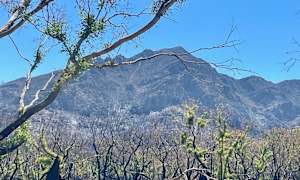Getting to Balranald
Balranald is located on the Sturt Highway, a comfortable five-hour (430km) trip from Melbourne via the Calder Freeway and Murray Valley Highway.
Despite being in the same state, Sydney is 854km away. Balranald is easily accessible from towns such as Mildura and Swan Hill
Balranald is a quiet, humble town, notable for its access to Lake Mungo and the newly established Yanga National Park.
Located on the western edge of the vast Hay Plain at a place once used to ford the Murrumbidgee River, the town is now a service centre for the surrounding irrigation district.
Balranald’s modest population is lucky enough to have the region’s rich natural landscapes at their fingertips.
Anglers from far and wide flock to the area to take in the magic of the five rivers, lakes and wetlands that are within a short 30 minutes’ drive from the town centre.
The Murray, Murrumbidgee, Lachlan, Wakool and Edward rivers draw in boaters, kayakers and campers all year round.
The CBD is a charming place, filled with equally charming locals who don’t hesitate to offer a welcoming g’day.
Visit surrounding villages, such as Euston, Kyalite, Penarie, Oxley and Hatfield and you will receive much the same warm and friendly reception.
Things to do Balranald
1. Take a trip to The Discovery Centre, at 83 Market Street, where you will be met with an impressive complex of buildings, sculptures and historic memorabilia.
The Balranald Discovery Centre precinct includes three iconic buildings – the Malcolm Building Museum, the Old Balranald Gaol and the first school in the area, the Wintong School building. Inside the museum, the front rooms are set out in their original format, as a ‘Stock and Station Agency’.
The display room contains a mural of the history of horses and was created by local school students with the guidance of local artist Jan Lawler.
2. Balranald and District Military Walk is a remarkable project, which begins outside the town’s Services Club.
It is a collection of 45 signs each of which tells the story of an individual service person.
The signs are spread over an entire kilometre which stretches from down Market Street into River Street and then continues along Court Street until they reach the town’s War Memorial.
They have been set 22 metres apart so that anyone reading the very detailed plaques can pause and contemplate the sacrifices made by the people described.
3. The grave of Josiah Viles is a rare piece of local eccentricity.
Australia has no history of town criers and therefore the grave of Josiah Viles, which is in the Church of England section of the Balranald Cemetery, is worth visiting.
Viles was an eccentric and much loved town crier who used to carry a rifle which he fired when he needed to make an important announcement.
He died in 1925.
4. Visitors mustn’t pass through without learning about the Mungo Man and Alice Kelly.
Near the Visitor Centre is a fascinating sign recounting the return of the bones of Mungo Man to Lake Mungo.
The plaque was erected to commemorate Mungo Man’s stopover in Balranald on November 16, 2017, on his journey back home to Lake Mungo and also to honour the late Alice Kelly.
The Mutthi Mutthi elder and original custodian of Lake Mungo National Park and the Willandra Lakes area ensured that the remains of both Mungo
Man and Mungo Lady were returned to the area.
A wonderful piece of local history.
Mungo Man was first discovered in 1974 by Geologist Dr Jim Bowler at the banks of Lake Mungo within the Balranald Shire.
The discovery and subsequent research conducted by archaeologist Dr Alan Thorne changed the world’s understanding of the antiquity of human occupation in Australia.
5. The Frog Sculptures Trail is very popular with the children.
There are twenty frogs dotted around the heart of the town.
Two can be found cutting a huge log beside the river and a trio of frogs can be spotted outside the Services Club.
The idea originated from a need to bring a novelty to the town that would make it distinctive, leading to the creation of the Southern Bell Frog Trail.
This frog is only found in semi permanent wetlands of eastern Australia and is now regarded an icon of Balranald.








